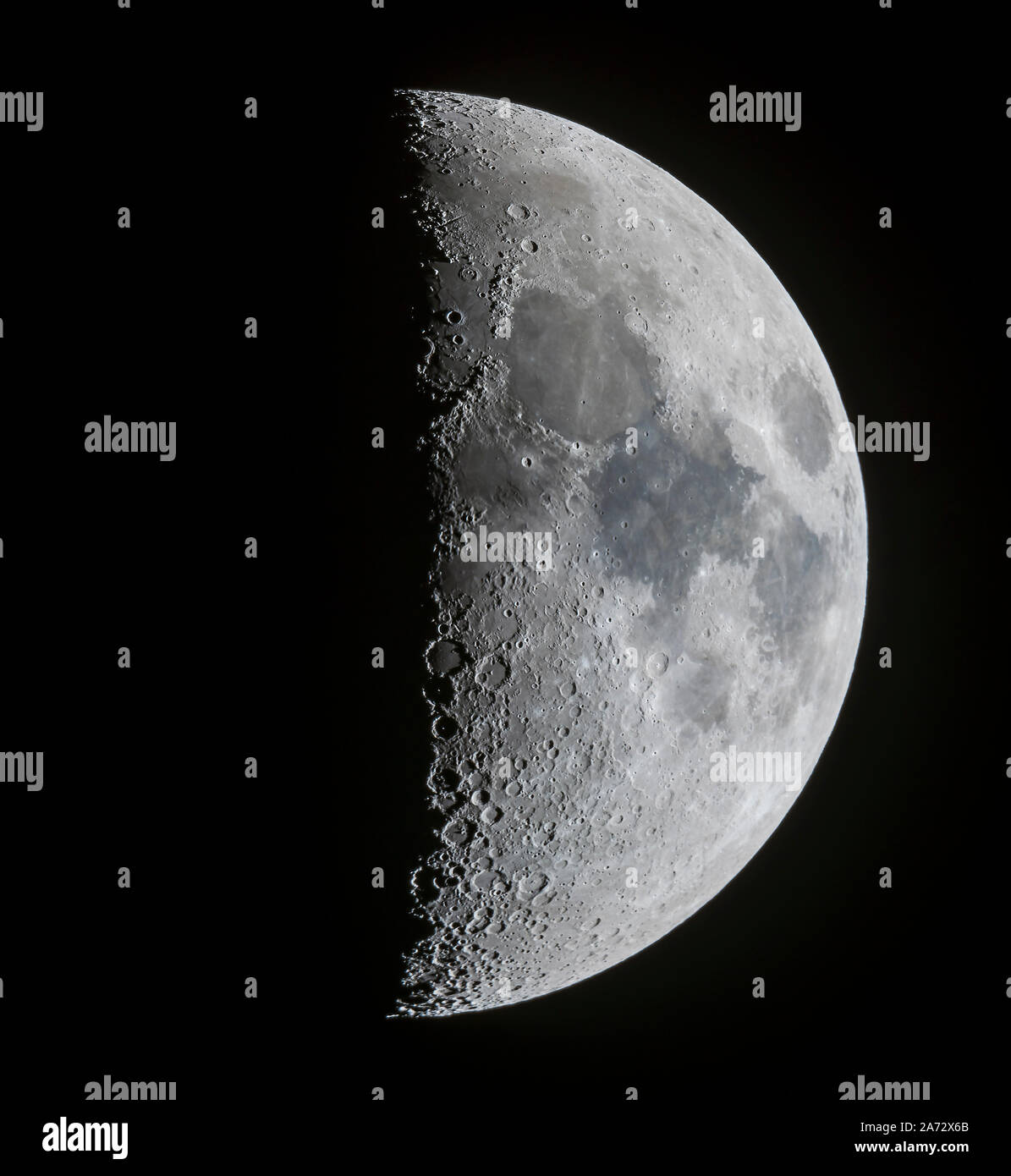A panorama of the 7-day-old first quarter Moon on March 13, 2019, showing the full disk and extent of incredible detail along the terminator, the divi

Image details
Contributor:
Alan Dyer / VWPics / Alamy Stock PhotoImage ID:
2A72X6BFile size:
76.7 MB (1.3 MB Compressed download)Releases:
Model - no | Property - noDo I need a release?Dimensions:
4966 x 5400 px | 42 x 45.7 cm | 16.6 x 18 inches | 300dpiDate taken:
13 March 2019More information:
A panorama of the 7-day-old first quarter Moon on March 13, 2019, showing the full disk and extent of incredible detail along the terminator, the dividing line between the day and night sides of the Moon where the Sun is rising as seen from the surface of the Moon. Note the tiny points of light at the centres of some of the craters (particularly Alphonsus and Arzachel below centre) in the Southern Highlands from sunlight just catching the central peaks of those craters. At top in the north the slash of the Alpine Valley is obvious as well as the curve of the Apennine Mountains. I have boosted the colour saturation and contrast somewhat to bring out the colour difference between the grey Sea of Serenity above center and the bluish Sea of Tranquillity right of centre. TECHNICAL: This is a panorama or mosaic of three images, for the southern, middle, and northern portions of the Moon, taken through a Celestron C9.25-inch SCT telescope but also with a Canon 1.4x telextender to increase the effective focal lengh even more to 3300mm at f/14. Each segment is a single exposure at ISO 100 of 1/20 second with the Sony a7III. Stitching was with Adobe Camera Raw using Perspective projection. So this is not an example of using a planetary camera to shoot hundreds of frames to stack and blend only the sharpest but rather an example of what can be done with simpler DSLR/Mirrorless camera techniques. The result does suffer from atmospheric blurring which varies across the disk, so this can’t compete with the images from skilled lunar photographers using specialized cameras, but it’s not bad! Also, shooting this phase of the Moon in March or April helps ensure sharper images as the evening Moon sits highest in the sky at this time of year for the northern hemisphere. However, I did apply unsharp and high-pass sharpening to snap up the detail. While the disk did just fit into the camera frame when it was turned 90° to fit the Moon along the long axis of the frame, allo